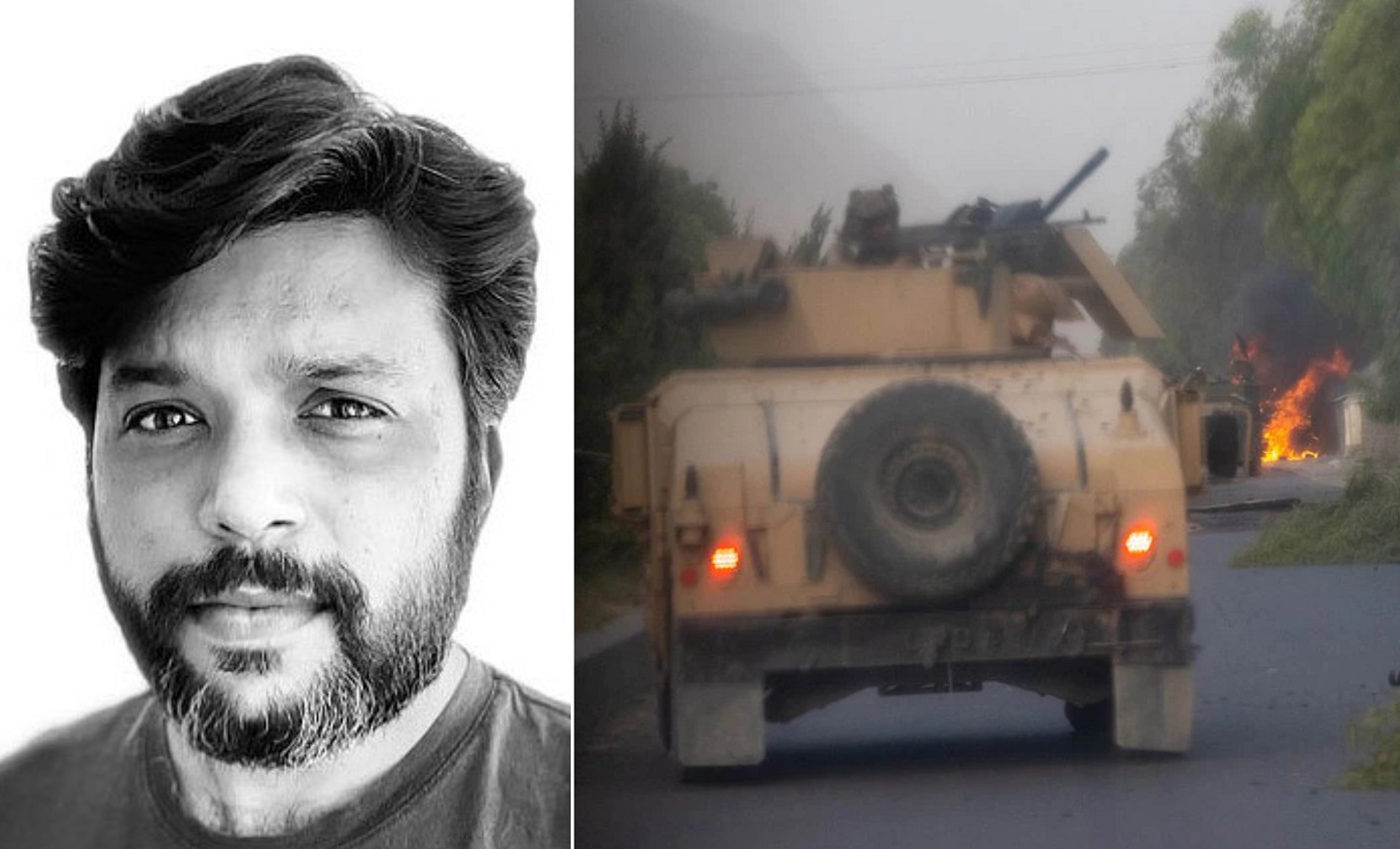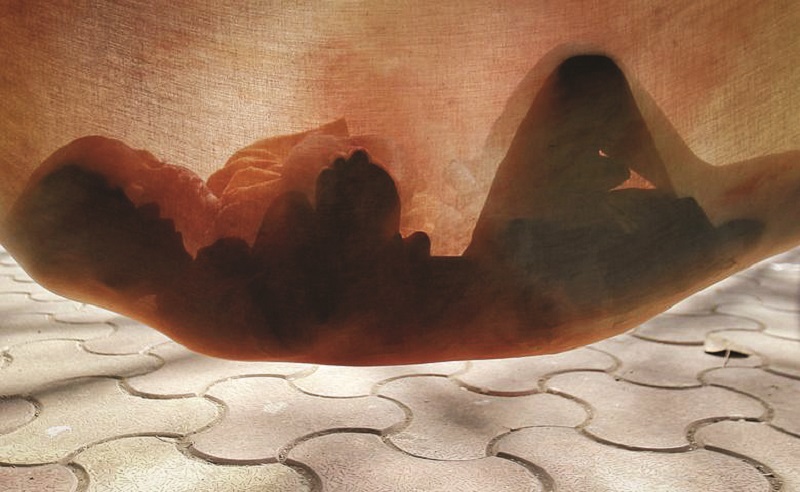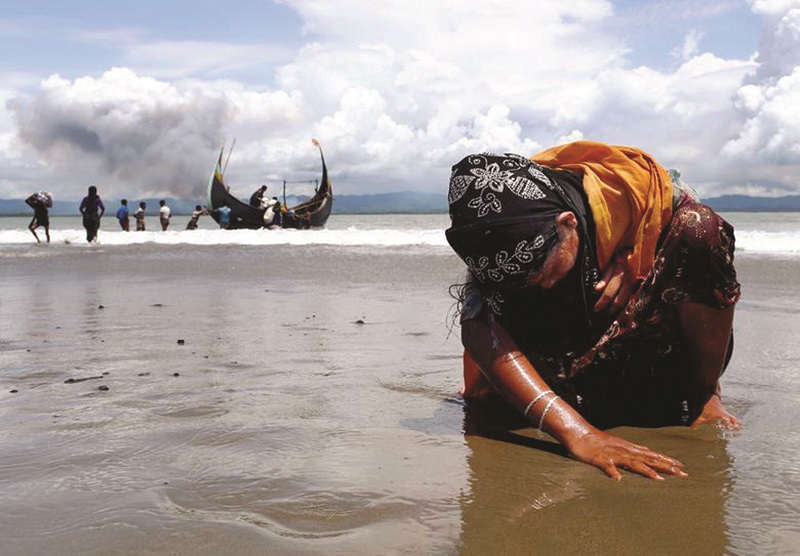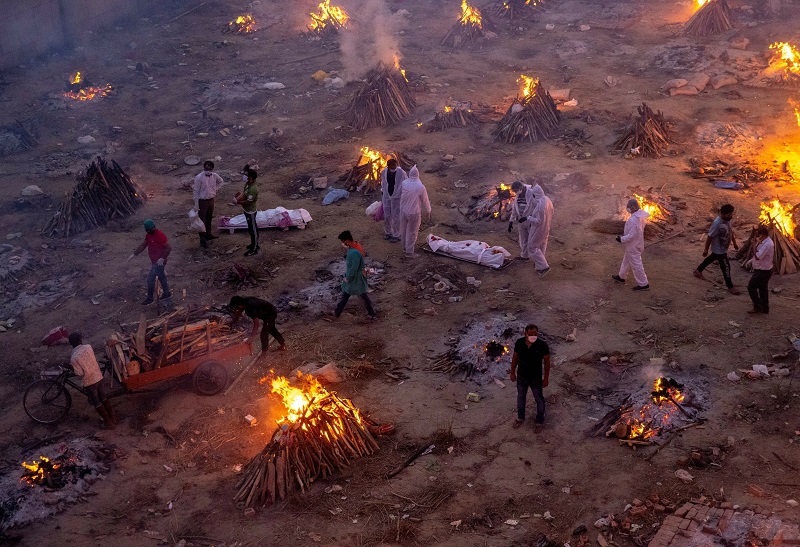
One of Siddiqui’s final images of the mission (All photos: Danish Siddiqui/ Reuters)
On Saturday morning, July 17, I woke up to the news that award-winning Reuters photojournalist Danish Siddiqui was no more; he had been killed the day before while covering clashes between Afghanistan security forces and the Taliban in Kandahar city. The last image on his Twitter feed is of security forces silhouetted against the darkening sky, the barrel of a gun clearly visible.
This picture took me back to another of Siddiqui’s images that show a human face, also in silhouette. His picture of three-year-old homeless boy, Sarwar, sleeping in a hammock along a sidewalk in Mumbai, was taken on March 7, 2012. In it, we see an embryonic being, the colour and texture of the cloth a vision of a womb-like sac, suspended in our mind’s eye in a place before birth.
This picture could have easily taken on the tropes of poverty porn and shown Sarwar with runny nose clinging to a bite of foraged food, especially as the photojournalism from the streets of India have turned such images into viable pieces of commerce. Instead, Siddiqui takes Sarwar’s image and gives him the humanity of being — at three years — still a baby, any baby, our baby. The viewer is transfixed by the exquisite wonder in this image, the darker foetal shadow of the boy, like a sonograph, juxtaposed under his features in repose.
danish_siddiqui.jpg

Siddiqui brought his empathetic gaze to many images like this, as he continued to photograph national and global emergencies. As the chief of the Reuters Pictures multimedia team in India, in the last years, he captured key moments of the unfolding Covid crisis in India, the protests against the Citizenship Amendment Act in 2020, the North East Delhi riots, and the migrant workers’ exodus after lockdown. He also covered the Rohingya genocide in Myanmar and asylum seekers in Switzerland, the 2015 Nepal earthquake, pro-democracy protests in Hong Kong, and the Easter bomb blasts in Sri Lanka in 2019, among other global events.
His picture of a Rohingya refugee after crossing the Bay of Bengal was taken when Siddiqui and his colleagues were part of the Reuters team that won the 2018 Pulitzer Prize. The woman’s face is obscured, and her body has fallen on the sand either in gratitude or exhaustion … or both. There is the hull of a small wooden boat in the distance, still disgorging men from its tight confines. Smoke billows at a distance. There is so much in this frame to process, but instead of our voyeuristic pity, it is the possibility of hope that is foregrounded.
In an interview with Scroll.in in 2018, Siddiqui said an image “should draw people and tell them the whole story without being loud”. His quietude is especially powerful in the pictures taken after the bomb blasts in Sri Lanka on Easter Sunday in 2019, one of a series of coordinated attacks by suicide bombers that killed more than 250 people. He photographed empty houses: red curtains surrounding a rumpled bed; a lone schoolchild’s backpack, the blue mosquito net falling like a shroud; a bright green autorickshaw tethered among verdant foliage, the driver no longer alive.
danish_siddiqui_photo.jpg

In an India that is becoming intolerant of any dissent, Siddiqui’s powerful lens earned the wrath of the government, and the Hindutva trolls on social media. With his famous photo of a mob beating up a lone man, Siddiqui shone the spotlight on the rabid assailants, not on the victim, and demonstrated the implications of silence. A group of men shouting pro-Hindu slogans beating a Muslim during protests sparked by the Citizenship Amendment Act in Delhi on Feb 24, 2020, highlighted a national complicity in the erosion of the secularism that India had always stood for.
And that resplendent image of the flag fluttering over the heads of thousands of protesting farmers? What is visible in Siddiqui’s stunning iconography is that the soul of India, through the livelihood of those that feed the nation, is at stake. It is a poster for a movement still unresolved.
His uncompromising images of the burning pyres at the height of the Covid crisis sparked outrage at a time when the Indian government was trying to downplay the problem. Yet, even here, where death visited so many families, Siddiqui drew his lenses away from tear-streaked faces and looked instead at a huddle of mourners, a man in full PPE gear barely standing in a barren field, the sardine-can crowding of heads and feet in a hospital.
by_danish_siddiqui-reuters.jpg

In an age of reality TV where journalists and viewers alike blur the lines between consent and voyeurism, stripping the human subject of any dignity in moments of abject grief, Siddiqui was, first and foremost, a chronicler of absence. Absence of distinctive facial features, of signages, of place names. He rendered the particular universal by the lack of labels, and in doing so, he dragged us all into stories of our shared humanity. He refused to let us pity the victim before quickly turning away, relieved to be unscathed. In the probe of his lens, we are all complicit.
On Siddiqui’s profile page on the Reuters website, the last line reads: “I respect my subjects the most — they give me my inspiration”. That is clear from his work, and as journalism attempts at a certain objectivity, Danish Siddiqui succeeded in that too.
Many of us will recognise his iconic pictures without knowing anything about the man behind the lens. Although some of his best work came from conflict zones, he also chronicled the minutiae of everyday life: a blind singer on a train, a child on the shoulders of his migrant-worker father heading back to their village in a lockdown; a soldier in full fatigues eating ice cream.
He filed stories every week, and his egalitarian lens showed up in places where we could not — would not — venture. The absence of such a talent is a grievous loss for the world.
This article first appeared on Jul 26, 2021 in The Edge Malaysia.


